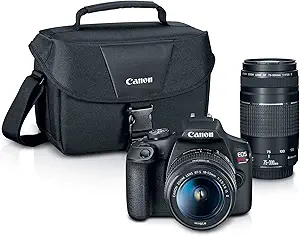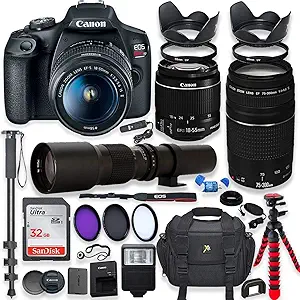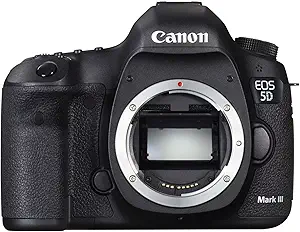The Ultimate Camera Buying Guide: How to Choose the Best Camera for Your Needs
Overview
Choosing the right camera can be a daunting task, especially if you're new to photography. With so many options available, it's important to understand the different types of cameras and the key features to look for. This guide will help you navigate the world of cameras and make an informed decision based on your needs and budget.
Types
1. Digital Cameras: These cameras are the most common type of camera and offer a range of features for different skill levels. They are compact, easy to use, and offer automatic settings for beginners.
2. DSLRs: These cameras are designed for more advanced photographers and offer interchangeable lenses, manual controls, and high-quality image sensors. They are larger and heavier than digital cameras but offer superior image quality and versatility.
3. Mirrorless Cameras: These cameras are similar to DSLRs but do not have a mirror mechanism, making them smaller and lighter. They offer interchangeable lenses, manual controls, and high-quality image sensors.
Key Considerations
1. Skill Level: Consider your skill level when choosing a camera. If you're a beginner, a digital camera may be the best option. If you're more advanced, consider a DSLR or mirrorless camera.
2. Budget: Cameras can range from a few hundred dollars to several thousand dollars. Set a budget and look for cameras that fit within your price range.
3. Intended Use: Consider what you will be using the camera for. If you're interested in travel photography, a compact digital camera may be the best option. If you're interested in portrait or landscape photography, a DSLR or mirrorless camera may be a better choice.
Features
1. Megapixel: The number of megapixels determines the resolution of the image. Higher megapixels offer better image quality but also require more storage space.
2. Sensor Size: The size of the image sensor determines the amount of light the camera can capture. Larger sensors offer better image quality in low light conditions.
3. Image Stabilization: This feature helps reduce camera shake and produces sharper images.
4. Autofocus: This feature helps the camera focus on the subject and produce sharp images.
5. ISO: This feature determines the camera's sensitivity to light. Higher ISO settings are useful in low light conditions but can produce more noise in the image.
6. Shutter Speed: This feature determines how long the camera's shutter remains open. Faster shutter speeds are useful for action photography.
7. Aperture: This feature determines the amount of light that enters the camera. A wider aperture allows more light to enter and produces a shallower depth of field.
8. Lens: The type of lens you use can greatly affect the quality of your images. Consider the focal length, aperture, and image stabilization when choosing a lens.
9. Zoom: The zoom feature allows you to get closer to your subject without physically moving closer. Optical zoom is preferred over digital zoom.
10. Image Quality: Look for cameras that produce high-quality images with accurate colors and minimal noise.
11. Video Quality: If you plan on shooting videos, look for cameras that offer high-quality video with image stabilization and manual controls.
Prices
1. Digital Cameras: $100-$1,000
2. DSLRs: $500-$5,000
3. Mirrorless Cameras: $500-$4,000
Tips
1. Do your research before buying a camera. Read reviews, watch videos, and ask for recommendations from other photographers.
2. Consider buying used or refurbished cameras to save money.
3. Invest in quality lenses for better image quality.
4. Practice using your camera to improve your skills.
5. Experiment with different settings to find what works best for you.
FAQs
Q: What is the difference between a digital camera and a DSLR?
A: Digital cameras are compact and easy to use, while DSLRs offer interchangeable lenses, manual controls, and high-quality image sensors.
Q: What is the best camera for travel photography?
A: A compact digital camera or mirrorless camera with a wide-angle lens is ideal for travel photography.
Q: What is the best camera for portrait photography?
A: A DSLR or mirrorless camera with a portrait lens is ideal for portrait photography.
Q: Do I need a full-frame camera?
A: Full-frame cameras offer superior image quality but are more expensive. Consider your budget and intended use before investing in a full-frame camera.
Q: Can I use my smartphone as a camera?
A: Smartphones offer decent image quality but are limited in terms of manual controls and lens options. A dedicated camera will offer better image quality and more versatility.














